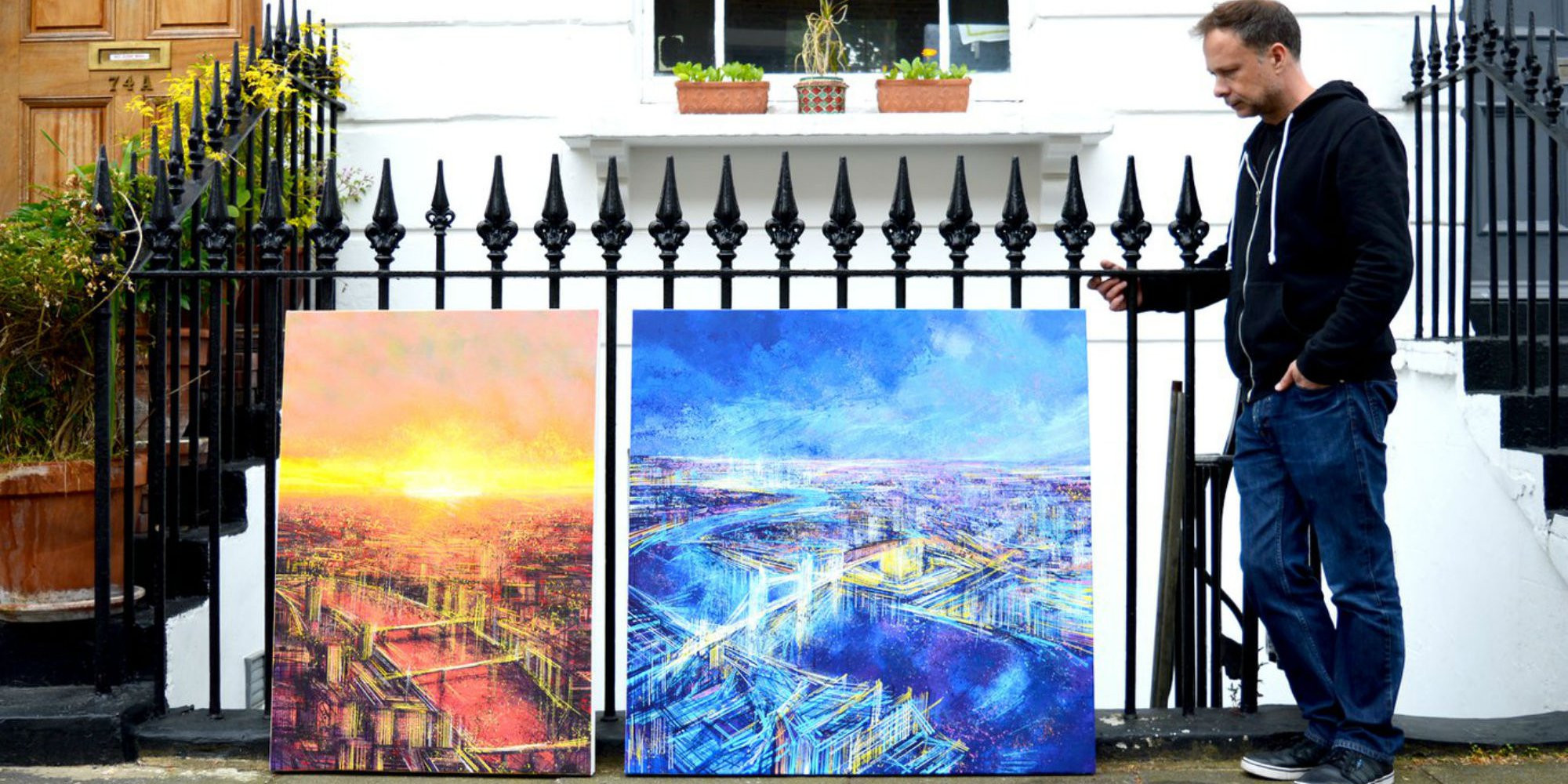Everybody loves landscapes, right?
Landscapes have long been a popular image in art, classical in origin and emerging as a distinct genre during the 17th century, then exploding in popularity during the 19th. They may depict the sublime or more pastoral scenes, which most people know them for. The appetite for landscape withstood the more abstract modern era, and it still remains a popular subject of art today.
It’s understandable – nature provides us with such beauty it makes sense we want to create images in its light. Many of us spend less time in nature than we’d like; observing a landscape on a home or gallery wall can offer an alternative immersive experience.
Perhaps for these reasons (or because of the typical association of overcrowding and trash), the cityscape may be considered the less impressive relation of the natural scene. But reverence for landscape does not make cityscapes paintings any less sophisticated, nor any less likely to tug at our heartstrings. And of course it still is a landscape ultimately, just reflecting our modern usage of land: the urban sprawl.
Good cityscape art is just as impressive as the best landscape. They also often combine a natural element, such as buildings against a skyscape, laying bare our juxtaposed reality of natural versus man-made. Of course, there is much architecture that can be considered art in itself, in this way providing art within the art (meta!)
It also has a greater history than you may think.
Emergence of cityscape art
Arguably the origins of cityscapes are also classical; aerial cityscape drawings became common in Ancient Rome, though for some time after this any depiction of cities was most likely the background within a painting, and not its primary imagery. It was the Dutch who really made this urban setting a feature in its own right, including the artist Johann Vermeer, and in particular his View of Delft, 1661 (interestingly enough, the Netherlands was also at the forefront in the rise of the landscape tradition).
Modern to the contemporary
Indeed, many great artists have utilised the urban setting as the basis for their work. Edouard Manet produced Impressionist cityscapes in the early modern period and Georgia O’Keefe, famous for her sensuous depictions of flowers and nature, is also esteemed for her striking depictions of New York. New York Moon from 1925 is a brilliant, almost vertiginous depiction of a New York street, all bold colour and confusing perspectives.
Artists nowadays create cityscapes in many different styles, but some return back to that classic impressionistic style that evokes nostalgia, among other things. We particularly love the ones that give an old-timey vibe, and make you want to stroll the streets of Paris with the breeze in your hair.
Toying with perception
Indeed, it’s often the ability to contrast geometry with nature, and the toying of the audience’s sense of proportion and perspective, that can make a cityscape so striking. Some cityscapes do away with an obvious skyline altogether, instead producing an abstracted, suggestive version of a city. Minimising the literal reflection of a city, or doing away with it altogether, allows deeper meaning and also the artist to transpose their own thoughts and emotions to the piece.
Photography is a medium on familiar terms with the cityscape, though this may also contribute to the assumption of the city scene as lesser. Quite the opposite though, looking beyond obvious skylines scenes are vast swathes of sophisticated photographic art. These too can toy with perspective and proportion and offer less realistic even abstract version of images we are usually familiar with.
Similarly yet conversely, hyper realistic paintings are gaining popularity, with the cityscape popular imagery. The beauty of these lies in their precision, provoking a second glance from the audience who assumes the image is photography.
But don’t these various lovely cityscapes make you want to hop on a plane and fly to the nearest metropolis for a day of exploration? Bring that feeling right into your home and discover something new every day.
Discover more one-of-a-kind cityscapes
Cover image via Marc Todd


